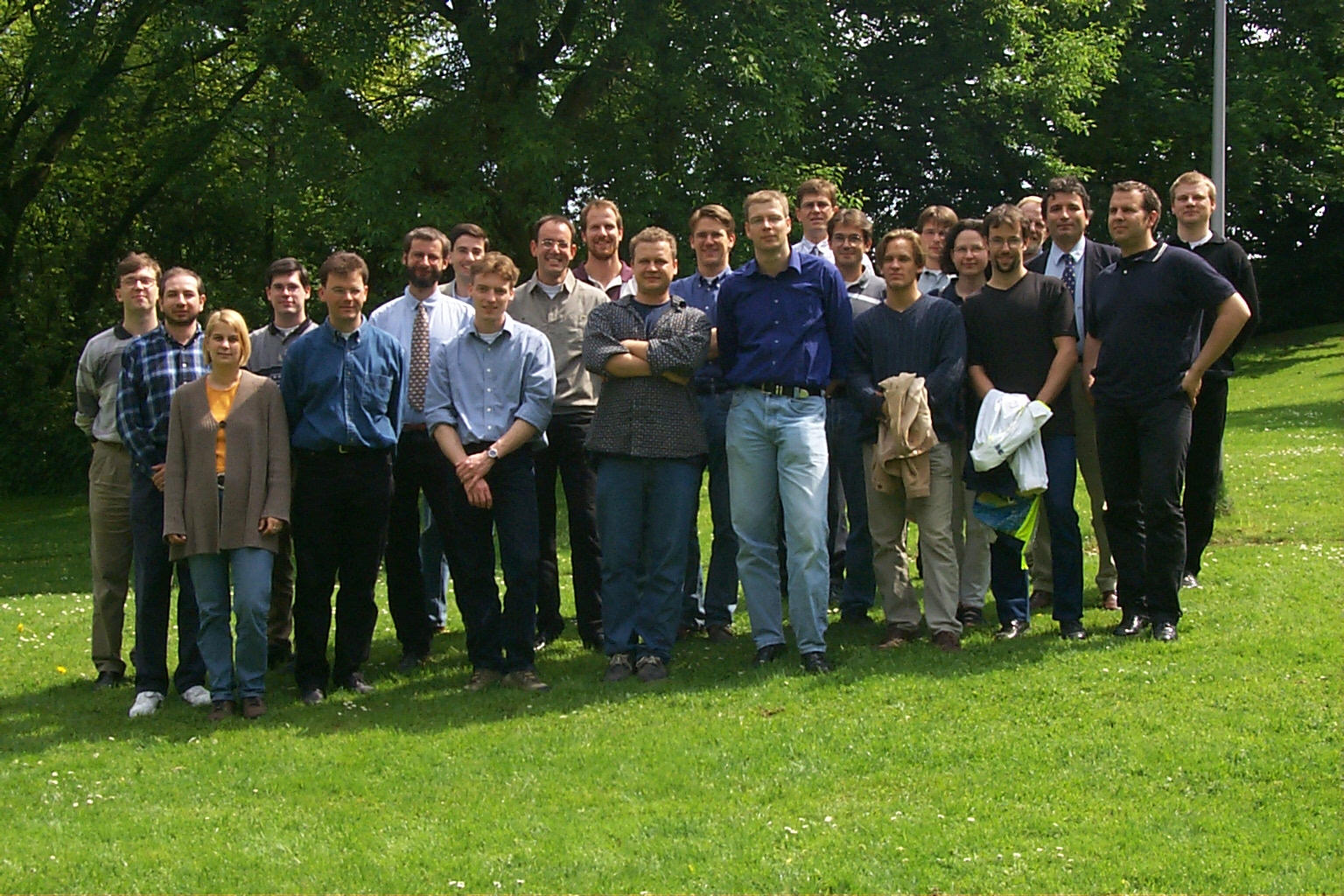
Happy course participants on a sunny day in Aachen.
NUMERICAL MODELING OF DEFORMATION
AND FAILURE OF MATERIALS
Aachen, 3-7 May 1999
taught by
Milan
Jirásek
Laboratory
of Structural and Continuum Mechanics
Department
of Civil Engineering
Swiss
Federal Institute of Technology at Lausanne
and organized by
Institute
for Statics and Dynamics
and
Institute
for Concrete Structures
Faculty
of Civil Engineering
RWTH
Aachen
MAIN TOPICS
1) Introduction: Field equations and discretization by finite elements, solution strategies for nonlinear problems, general overview of material models and constitutive frameworks.
2) Flow theory of plasticity: Yield conditions (pressure-independent, pressure-dependent, anisotropic), flow rules (associated, non-associated), hardening/softening laws (isotropic, kinematic, combined), multi-surface plasticity, consistency condition, tangential stiffness.
3) Computational plasticity: stress return algorithms (radial return, closest point projection, generalized trapezoidal and midpoint rules, generalized cutting plane), algorithmic stiffness.
4) Continuum damage mechanics: Concept of damage, characterization of damage (scalar, tensorial), principles of strain equivalence, stress equivalence, and energy equivalence, loading functions, damage evolution laws, models with different behavior in tension and in compression, damage deactivation upon crack closure, computational aspects, combination of damage and plasticity.
5) Smeared-crack models: Concept of cohesive crack, fixed/rotating crack models, stress locking (spurious stress transfer), multiple-crack models, size-adjusted softening modulus.
6) Microplane models: Schmid's law, single crystal and multicrystal plasticity, static and kinematic constraint, microplane stress-strain laws, volumetric-deviatoric split, relation to plasticity and damage, anisotropic damage models based on the microplane concept.
7) Strain localization: Standard strain-softening continuum, ill-posedness and pathological mesh sensitivity, basic types of localization limiters, nonlocal integral models for damage and plasticity, comparison of nonlocal formulations, numerical aspects, alleviation of mesh-induced directional bias, higher-order gradient models for plasticity and damage, micropolar continua.
8) Discrete crack models: Linear elastic fracture mechanics, singular finite elements, Hillerborg's fictitious crack model, elements with embedded discontinuities, comparison of formulations, combination with continuum models, nonlocal version.
9) Thermodynamic approach: Basic notions and laws of thermodynamics, development of constitutive models based on the thermodynamic formalism, thermodynamic inconsistency of certain models.
10) Rate-dependent models: Linear viscoelasticity, viscoplasticity (Perzyna model, Duvaut-Lions model, rate-dependent yield stress), viscous damage, rate-dependent smeared-crack and microplane models.

Happy course participants on a sunny day in Aachen.